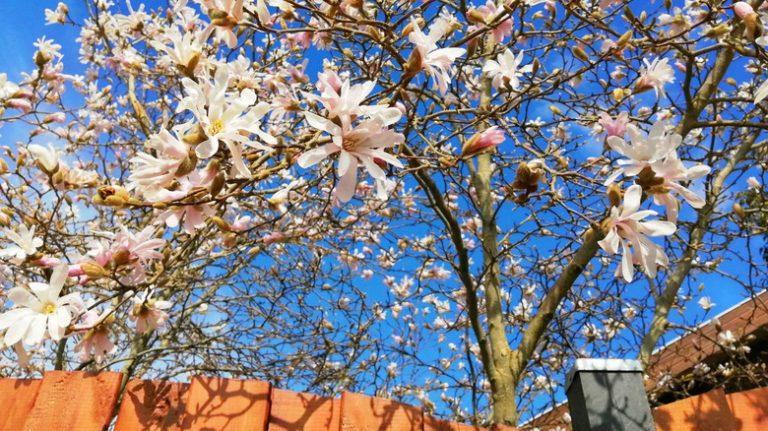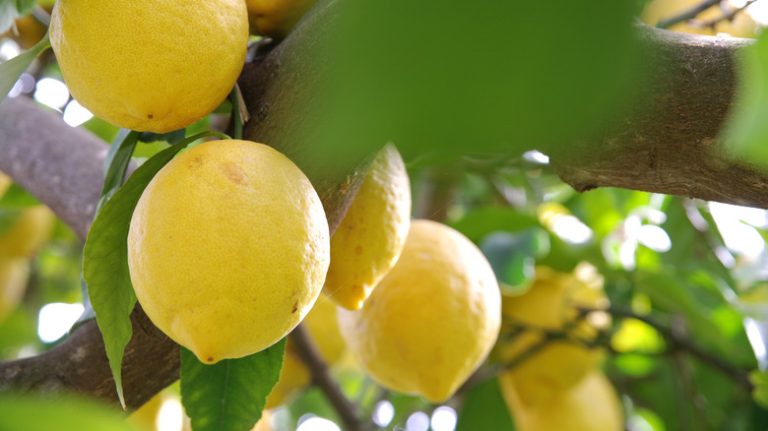The Lavender Twist Weeping Redbud, also known as Cercis canadensis ‘Covey’ or simply the Lavender Twist Redbud, is a unique and eye-catching specimen tree. This tree is known for its twisted and weeping branches, which give it a distinctive and captivating shape. The foliage of the Lavender Twist Weeping Redbud is a vibrant purple color, making it an attractive addition to any landscape.
One of the many benefits of the Lavender Twist Weeping Redbud is its hardiness. It is drought tolerant and can withstand relatively harsh conditions, making it a great choice for gardens in the South. This tree is also relatively easy to care for, requiring minimal watering and attention once planted.
When it comes to planting the Lavender Twist Weeping Redbud, it is best to choose a location that receives full sunlight. This tree can thrive in a variety of soil types, although it does prefer well-draining soil. To achieve the best results, we recommend fertilization in the spring and regular pruning to maintain its twisted shape.
Lavender Twist Redbud – Cercis Canadensis
The Lavender Twist Redbud, also known as Cercis Canadensis ‘Lavender Twist’, is a large weeping redbud that adds a unique shape and vibrant color to any garden. This eye-catching plant is a cultivar of the Eastern Redbud, Cercis Canadensis, which is native to eastern North America.
The Lavender Twist Redbud is known for its cascading branches that create a beautiful display of lavender-purple flowers in the spring. The heart-shaped leaves add interest to the tree while it is on full display during the growing season.
When it comes to planting the Lavender Twist Redbud, they are not too picky about the soil type, but they do prefer well-drained soil. They can tolerate a variety of light conditions, but they tend to perform best in full sun to light shade.
While the Lavender Twist Redbud is relatively low-maintenance, there are a few care tips to keep in mind. Regular watering is essential, especially during the first few years of growth. Pruning should be done in the winter to maintain the tree’s shape and remove any dead or damaged branches. Fertilizing can be beneficial to promote maximum growth and flower production, but be sure to follow the product’s instructions and avoid over-fertilization.
One of the advantages of the Lavender Twist Redbud is that it is resistant to many pests and diseases. However, it is still essential to keep an eye out for any potential issues and take prompt action if needed.
If you are thinking about buying a Lavender Twist Redbud, consider it as a specimen plant or as an accent in your garden. This unique tree can add a touch of elegance to any landscape.
Lavender Twist Redbud FAQs:
- How tall does the Lavender Twist Redbud grow?
- What is the best location for planting a Lavender Twist Redbud?
- Do Lavender Twist Redbuds attract animals or insects?
- How should I care for my Lavender Twist Redbud during the winter?
- When is the best time to prune a Lavender Twist Redbud?
- Do Lavender Twist Redbuds require a lot of water?
- Are there any specific nutrients they require?
- How can I achieve maximum flower production in my Lavender Twist Redbud?
If you are looking for a stunning and unique tree to enhance your garden, the Lavender Twist Redbud is definitely worth considering. Its twisted branches, showy flowers, and attractive foliage make it a standout choice.
Note: Make sure to consult a local gardening guide or expert for specific care instructions and recommendations based on your location and garden conditions.
Lavender Twist Weeping Redbud
The Lavender Twist Weeping Redbud, also known as Cercis canadensis ‘Lavender Twist’, is a unique and beautiful tree that adds a touch of elegance to any landscape. Its weeping form and captivating lavender-colored flowers make it a highly sought-after specimen.
These trees can grow up to 10 feet tall and 15 feet wide, making them smaller than traditional Redbuds. The maximum height is reached within 10 years of planting.
Lavender Twist Weeping Redbuds prefer a well-draining soil and a location that receives full sunlight. However, they can tolerate partial shade as well. These trees are hardy in USDA hardiness zones 5 to 9, although they are known to thrive in zones 5 to 8.
When it comes to care, Lavender Twist Weeping Redbuds are relatively low-maintenance. They are drought-tolerant and require minimal watering once established. In terms of fertilization, it is recommended to use a balanced product in early spring and follow the instructions on the label.
Pruning these trees is easy and should be done in late winter to early spring. Remove any dead, diseased, or crossing branches to maintain the tree’s shape. You can also use twist ties or tape to train the branches into a twisted form.
Lavender Twist Weeping Redbuds are resistant to most pests and diseases. However, like any living plant, they may encounter some issues. If you notice any signs of diseases or pests, it is important to take action promptly.
During the winter months, the Lavender Twist Weeping Redbuds add a unique touch to the landscape with their twisted branches. They provide a lovely contrast to the snowy scenery and can be seen as a focal point in any garden.
In conclusion, the Lavender Twist Weeping Redbud is a stunning tree that offers both visual appeal and ease of care. Its twisted form, showy purple flowers, and ability to tolerate various conditions make it a popular choice for gardens across the country. Whether you’re looking for a new addition to your landscape or a standout specimen tree, the Lavender Twist Weeping Redbud is sure to impress.
Lavender Twist Weeping Redbud Tree for Sale – Buying Growing Guide
If you’re looking to add a unique and eye-catching tree to your garden, the Lavender Twist Weeping Redbud is a fantastic choice. With its beautiful lavender-pink flowers, twisted and weeping branches, and striking foliage, this tree is sure to be a showstopper in any landscape.
The Lavender Twist Weeping Redbud, also known as Cercis canadensis ‘Covey’, is a relatively small tree that can reach a height of only three to eight feet, making it perfect for smaller gardens or as an accent tree. It is hardy in USDA Zone 5 to 9, which covers most of the eastern and some parts of the central United States.
When buying a Lavender Twist Weeping Redbud tree, it’s important to choose a reputable seller. Many garden centers and online nurseries offer this tree for sale. Make sure to select a healthy tree with well-developed buds, and consider buying from a seller that ships the tree as a bare root or potted plant. This will ensure that the tree arrives in good condition and has a higher chance of survival.
When planting the Lavender Twist Weeping Redbud, make sure to select a location that receives full sunlight. The tree can tolerate some shade, but it will thrive and produce more flowers in a sunny spot. The soil should be well-draining and rich in nutrients. If the soil is heavy clay, consider adding organic matter, such as compost, to improve drainage.
After planting, it’s important to water the tree regularly, especially during hot and dry periods. Weeping redbuds are relatively drought-tolerant, but they still require adequate watering to establish a strong root system. Water deeply, making sure to saturate the root zone. Avoid over-watering, as this can lead to root rot.
For fertilization, you can apply a balanced slow-release fertilizer in early spring. Follow the instructions on the fertilizer package for the correct dosage. It’s also recommended to mulch around the base of the tree to conserve moisture, suppress weeds, and improve soil fertility.
Pruning is not necessary for the Lavender Twist Weeping Redbud tree to maintain its unique shape. However, you can remove any dead, damaged, or crossing branches to improve the overall appearance of the tree. Pruning should be done in late winter or early spring before new growth begins.
The Lavender Twist Weeping Redbud is known for attracting birds, butterflies, and other pollinating insects with its nectar-rich flowers. To maximize the wildlife value of the tree, avoid using pesticides or insecticides that may harm these beneficial animals.
In conclusion, the Lavender Twist Weeping Redbud is an easy-to-grow tree that adds a unique touch to any garden. With its twisted and weeping branches, showy lavender-pink flowers, and attractive foliage, it is sure to be a focal point in your landscape. If you’re looking to buy this tree, make sure to choose a reputable seller and follow the planting and care instructions. Happy gardening!
Plant Care
The Lavender Twist Weeping Redbud is a unique and beautiful tree that requires proper care to thrive. Here is a guide to help you take care of this stunning specimen:
Location and Sunlight
The Lavender Twist Redbud prefers full sunlight for the best growth and flowering results. Plant it in an area that receives at least 6 hours of direct sunlight each day. However, it can also tolerate partial shade.
Watering
Water the Lavender Twist Weeping Redbud regularly, especially during the first growing season. Make sure the soil is well-drained to prevent waterlogged conditions that can lead to root rot. However, avoid overwatering, as the tree is relatively drought-tolerant once established.
Fertilizing
Apply a slow-release balanced fertilizer in early spring, before new growth begins. Follow the package instructions for proper dosage. Fertilize established trees once a year to provide necessary nutrients for healthy growth.
Pruning
Prune the Lavender Twist Redbud in late winter or early spring when it is still dormant. Remove any dead, damaged, or crossing branches to maintain an open and airy growth habit. You can also shape the tree by selectively removing branches. Avoid heavy pruning, as the tree’s cascading branches and twisted trunk are its most appealing features.
Pest and Disease Control
The Lavender Twist Weeping Redbud is relatively pest and disease-free, making it a low-maintenance tree. However, it’s always a good practice to monitor for aphids, caterpillars, or other common pests. In case of an infestation, you can use pesticides labeled for use on redbuds.
Wildlife Attraction
The Lavender Twist Redbud is highly attractive to birds, butterflies, and other pollinators. Its showy purple flowers provide a source of nectar, while the cascading branches offer cover and nesting sites. Planting this tree can create a lively and colorful habitat in your garden.
Winter Care
During winter, the Lavender Twist Redbud’s foliage will fall, leaving its twisted, cascading branches on display. Provide some protection by staking the tree to prevent damage from heavy snow or ice accumulation. Remove the stake once the threat of winter weather has passed.
With proper care and maintenance following these instructions, your Lavender Twist Weeping Redbud will thrive and provide years of beauty and enjoyment in your garden.




